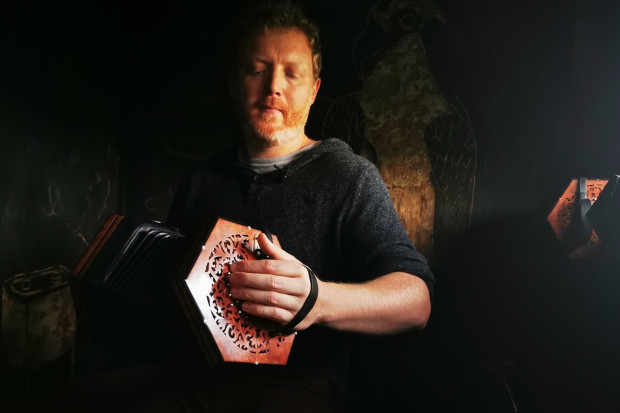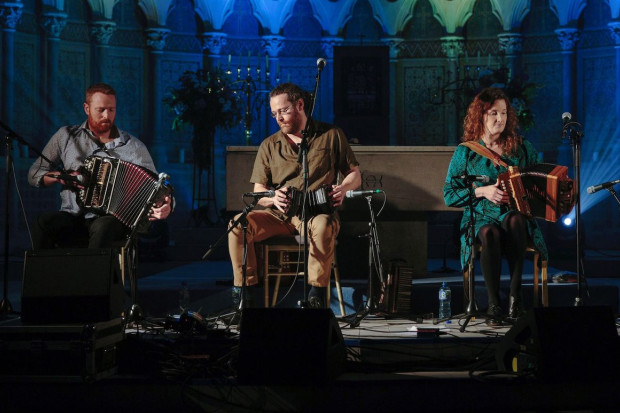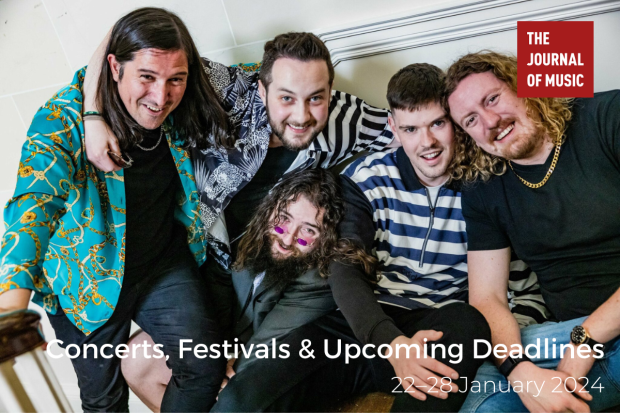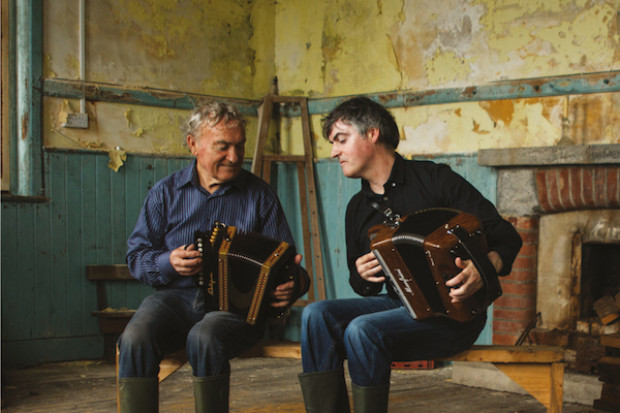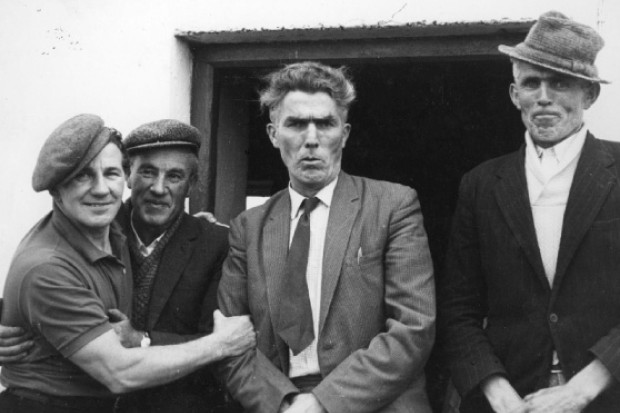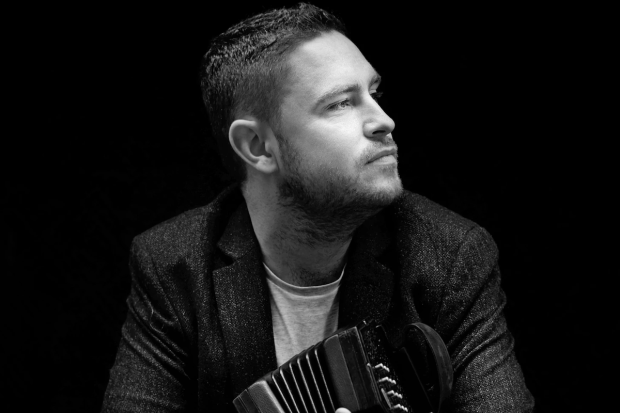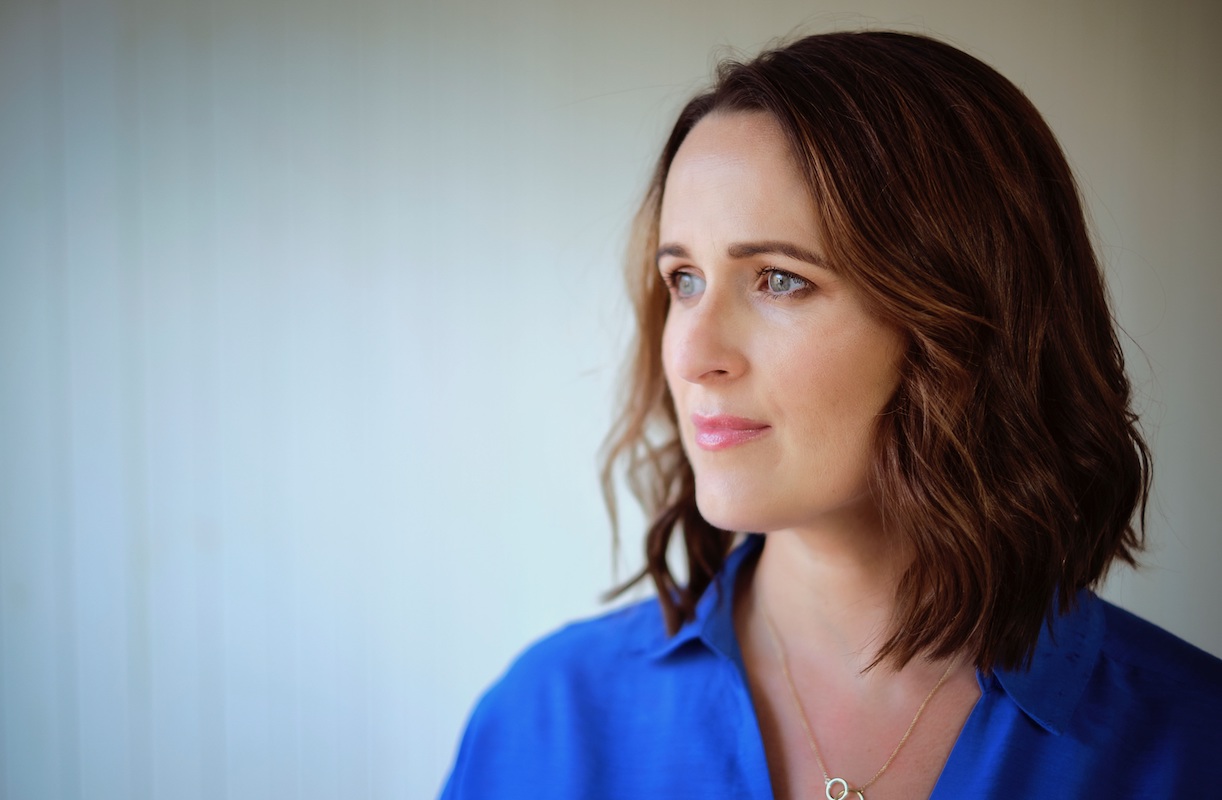
Síle Denvir (Photo: Cathal Mac an Bheatha)
Finding New Sounds in Sean-nós
Síle Denvir’s solo album, Anamnesis, is further evidence of a new wave of sean-nós singing (as suggested here recently), following on from some notable recordings released last year, and other releases by singers such as Lorcán MacMathúna, Eoghan Ó Ceannabháin and Cathal Ó Curráin. The current recipient of the Gradam Ceoil TG4 Amhránaí na Bliana award, Denvir is a singer and harpist, a founder of the group Líadan (making two albums with them), and has collaborated frequently with many other musicians and singers. She has made a formidable contribution to song in Irish, both as a singer and academic (she is a lecturer in DCU’s School of Irish). In one sense she is in the vanguard of this movement, as a sort of leader and mentor: she was one of the music directors of the recent Bláth na hÓige television series and appeared on its accompanying album. However, this is her first solo recording to focus on the sean-nós tradition – her 2016 CD, Caithréim: Ceol agus Amhráin ó Dhrámaí an Phiarsaigh, focused on the songs and music of Patrick Pearse’s plays.
The term ‘sean-nós’ is often supplemented by the descriptors ‘solo’ and ‘unaccompanied’ – reflecting the usual way these songs are sung in community and informal contexts, as well as in competitions like An tOireachtas. However, on this recording Denvir has made the artistic decision to embed her singing within sustained, drone-based textures, described in the sleeve notes as ‘a meditative, evocative soundworld’. This is very much in keeping with the style of the aforementioned releases and singers, and indeed the idea of accompanied sean-nós singing seems to be becoming more commonplace. Contributing to the overall sound and arrangement of the material is John Reynolds, who has worked with many Irish and international artists, and produced the albums of Sinéad O’Connor. The only other musician credited is the cellist Caroline Dale, a prolific London-based performer across many genres.
Denvir learned her singing growing up in Conamara, and her approach is deeply informed by the singers she heard growing up there. The same is true of the selection of songs included: many of these are cornerstones of the Conamara repertoire, and sung by many of the icons of the area. Throughout the album her singing has a remarkable clarity and facility, and the recording allows the listener to fully engage with her detailed interpretations. The pace of the performance is always measured and reflective, allowing her to fully express the rich and beautiful ornamentation so typical of the region. This is always fully integrated into the songs, so it never appears as if her exceptional technique is an end in itself; every turn, grace note and variation is indispensable and an essential part of the authenticity and authority of her approach.
Sean-nós and the drone
The album is certainly consistent in the shaping of the songs’ arrangements, all of which begin with the sonic background as an introduction. For instance, the first song, Cearbhall Ó Dálaigh’s famous ‘Eileanóir a Rún’, is exquisitely sung over a backdrop of sound formed from multitracked synths, cello, cello harmonics and possibly harmonium, with a kaleidoscopic shifting of intensity, timbre and tone. At various points in the song there is some anticipation or echoing of the melody by the cello, sometimes overlapping the melody. There has been much written about the suitability (and instinctiveness) of the drone or dordán as an accompaniment for sean-nós (including by Denvir herself). Lillis Ó Laoire and Sean Williams state how Joe Heaney’s concept of neá or nyah relates to the drone or hum which he claimed to hear in his head when singing, and how this sense of an internal drone manifests itself in the practice of other singers (see Bright Star of the West: Joe Heaney, Irish Song Man).
In her introduction on the sleevenotes, Denvir writes: ‘Bím ag smaoineamh go minic ar an mbrí atá leis na hamhráin seo, agus ní ar bhrí na filíochta amháin, ach ar an mbrí mhothaitheach anamúil atá leo don té a chasann agus don té a chloiseann.’ (‘I often think about the meaning the songs have, not just the meaning of the poetry, but the emotional, soulful meaning that [the songs] have for both the singer and the listener’). A sense of wholeness and interweaving of song, text and interpretation is unquestionably present throughout this CD: Denvir’s mastery of the style enables the transmission of feeling through the text, so that the listener is brought into the mindset of the poets, and can experience these emotions themselves through the song. ‘Eileanóir a Rún’ is a fine example of this, its intensity mirroring the depth of feeling the poet has for his love, culminating in the final ecstatic refrain of her name, where Denvir raises the arc of the melodic phrase to a new height
Full range of technique
On another emotional plane, ‘Amhrán na hÉascainne’ – the Irish-language version of the Child Ballad ‘Lord Randall’ or ‘Henry My Son’ – is raw in its utterances of the poisoned husband, and the damnation of his wife. Here the tambura-influenced dronescape is thinner, sparser in activity, and even spectral in quality, befitting the bleakness of the song. Another song I was particularly taken with is ‘Cúirt Bhaile Nua’, where the song conveys the poet’s tragic yearnings for a woman he loves but cannot have. The drone texture, foregrounding a short cello loop/ostinato, again fits well with the overall feel of the song, and Denvir uses the full range of her technique here, developing and intensifying the ornamentation in successive verses to put across the despair and hopelessness of the text.
In most of the songs, Denvir has answered the question she posed in her thesis on contemporary sean-nós song: ‘Más é an scéal an rud is tábhachtaí san amhrán, an gcuireann dordán isteach air sin nó an dtugann sé diminsean eile don eispéaras?’ (‘If the story is the most important element of the song, does the drone [or accompaniment] interfere with this, or does it add another different dimension to the experience of the song?’). Two songs stray from this approach: ‘Contae Mhaigh Eo’ has a stronger pulse, and a more rhythmic accompaniment featuring bodhrán, cello and a type of synth bell sound. While it produces complex interplay between the song and the backing, I found it harder here to connect the two elements. The drums at the beginning of ‘Seothín Seo-hó’ were also unusual, although the arrangement as it progresses makes great use of her double-tracked voice.
Taken in its entirety, the album probably overuses the drone-texture approach, which is too rigidly focused on the ‘tonic’ or final of the songs, although there is a lot of subtlety and fine detail within the music on repeated listens. More pertinently, as Síle Denvir is such a powerful singer as a soloist, it was somewhat odd to not have some unaccompanied sections at the beginning of songs, or even a full track, where she could be heard in this way. Perhaps the effect of the dronescape was a component or sonic manifestation of the underlying idea of anamnesis – a calling back to mind, a recollection of voices music past, and learning from these. Whatever the case, one longed for some moments where these voices – and Denvir’s channelling of them – were granted additional space: such magnificent and profound singing deserves our full attention.
Visit www.siledenvir.com.
Subscribe to our newsletter.
Published on 14 June 2023
Adrian Scahill is a lecturer in traditional music at Maynooth University.










